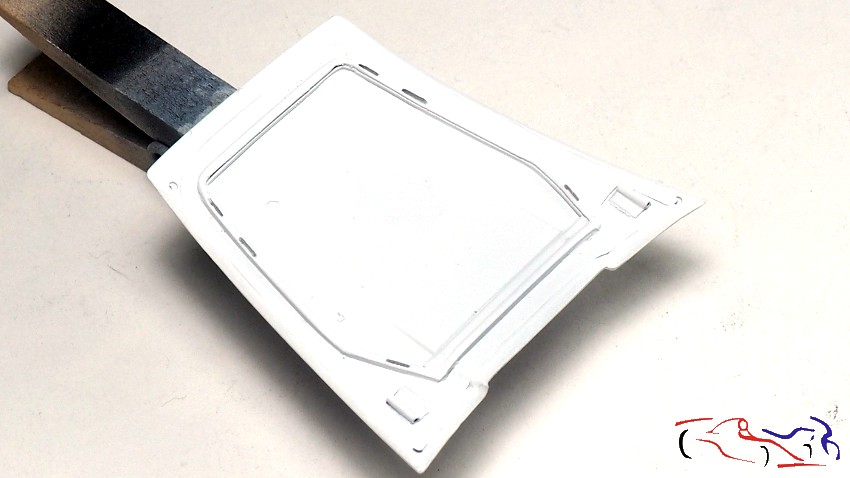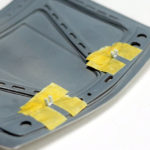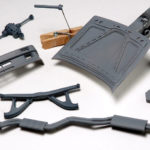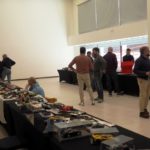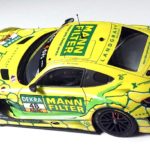Ya va quedando menos!!! Pero empecemos por el principio. Y ya le tocaba el turno a montar las ruedas y los conjuntos de freno. Primero monté los discos y después las ruedas.
There’s less left!!! But, let us start at the beginning. And now it was the turn to assemble the wheels and brake assemblies. First I mounted the discs and then the wheels.
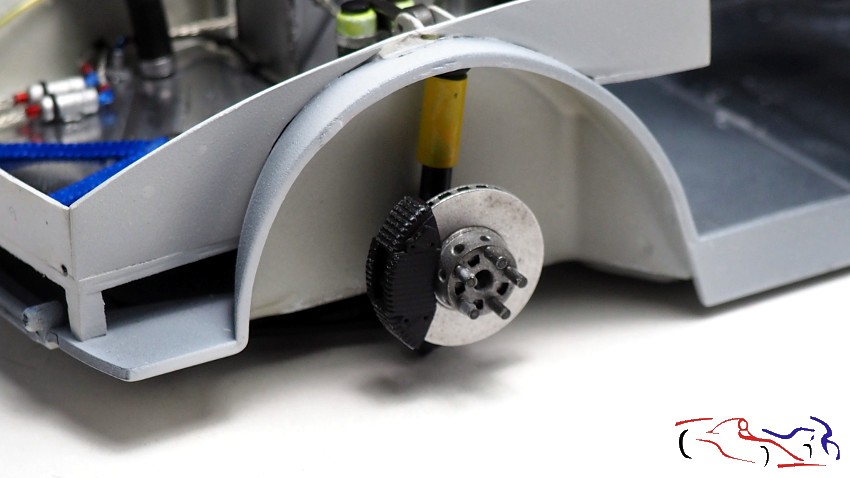
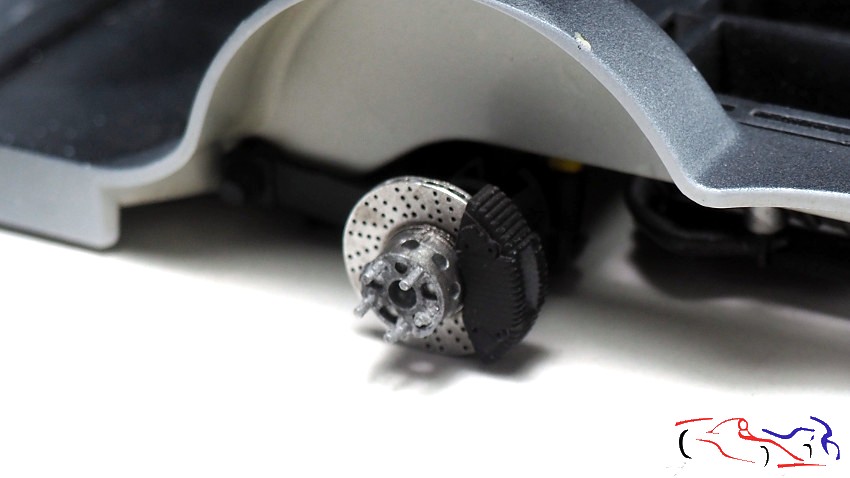
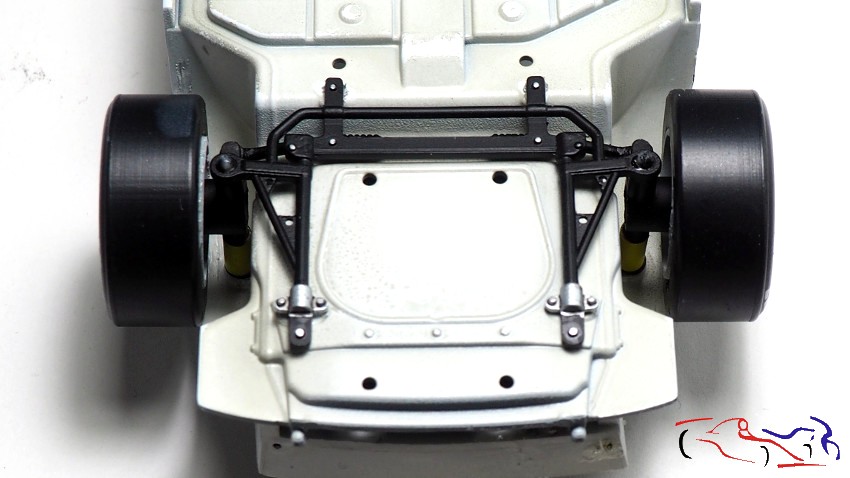
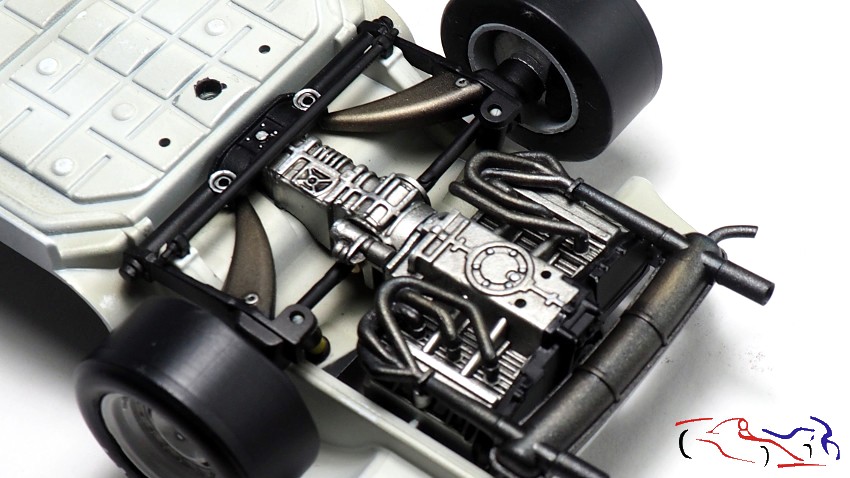
Pero cuando lo dejé secar y lo probé, vie que las ruedas salian mucho y que dejaban la carrocería muy separada del suelo: estaba muy alta!!
But when I let it dry and tried it, I saw that the wheels came out a lot and left the body very separate from the ground: it was very high!!
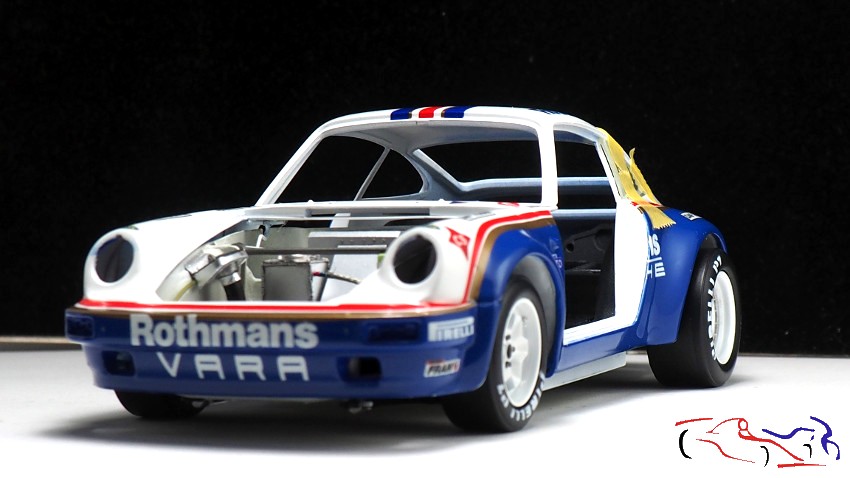
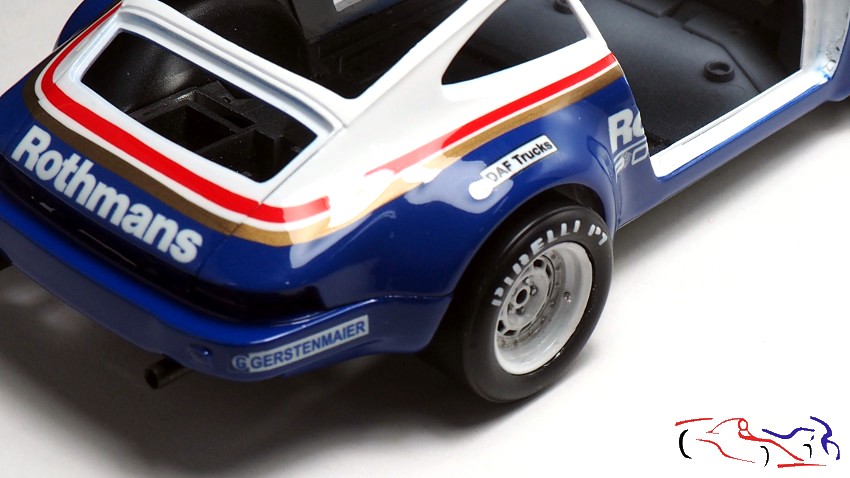
Por tanto, medir cuanto sobresalían de más y tocó despegar las ruedas y sus conjuntos de frenos. Lo primero que hice en el tren delantero fue agrandar por debajo, el hueco del disco de freno donde se assienta el buje, y así pegarlo más arriba y por tanto, bajar la carroceria. En total fue 1 mm que veis en la primara foto. Después, fue acorttar la pieza del motor donde se colocaban los frenos, eliminando 4 mm de cada lado, que veis en la segunda foto. Una vez cortado, enmasille y le puse una laminita de plasticar donde le pegaría el freno (tercera y cuarta foto). En el disco de freno, amplié el agujero central para pode meter un vástago con una punta metálica desde el exterior. Para qué? Pues meteria ese vástago para marcar con la punta, lel plastico que puse anteriormente, que se ve en la foto cuarta. Pero también habría que posicionar bien la rueda en altura y centrada horizontalmnete, con respecto a la carrocería, fijarla y entonces meter el vástago desde fuera de la llanta y marcar el punto central. Y eso, hacerlo a mano alzada podía ser muy peligroso por si se mueve la rueda. Por tanto, me ayudé de cinta transparente autoadhesiva de doble cara, que puse en el buje (foto quinta). Así, marque el centro, agrandé el agujero con una broca para que pudiera meter ese vástago, y asi, pegar la rueda:
Therefore, we measured how much they were protruding and had to take off the wheels and their brake assemblies. The first thing I did on the front axle was to enlarge the hole in the brake disc where the hub sits below, and thus glue it higher and therefore lower the body. In total it was 1 mm that you see in the first photo. Next, it was necessary to shorten the engine part where the brakes were placed, eliminating 4 mm en each side, which you see in the second photo. Once cut, I putty it and put a plastic sheet where I would stick the brake (third and fourth photo). On the brake disc, I enlarged the central hole so that a stem with a metal tip could be inserted from the outside. Why? Well, I would insert that stem to mark with the tip, the plastic that I put previously, which can be seen in the fourth photo. But you would also have to position the wheel well in height and centered horizontally, with respect to the body, fix it and then insert the stem from outside the rim and mark the center point. And doing it freehand could be very dangerous in case the wheel moves. Therefore, I used transparent double-sided self-adhesive tape, which I put on the hub (fifth photo). So, I put the wheel and then, insert the stem and marked the center. So I enlarged the hole with a drill bit so that I could insert that stem, and thus, glue the wheel with the stem in the middle:
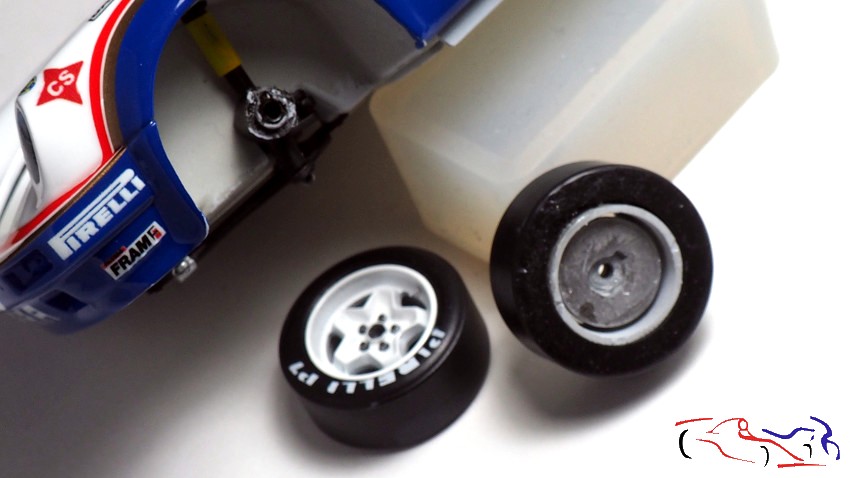
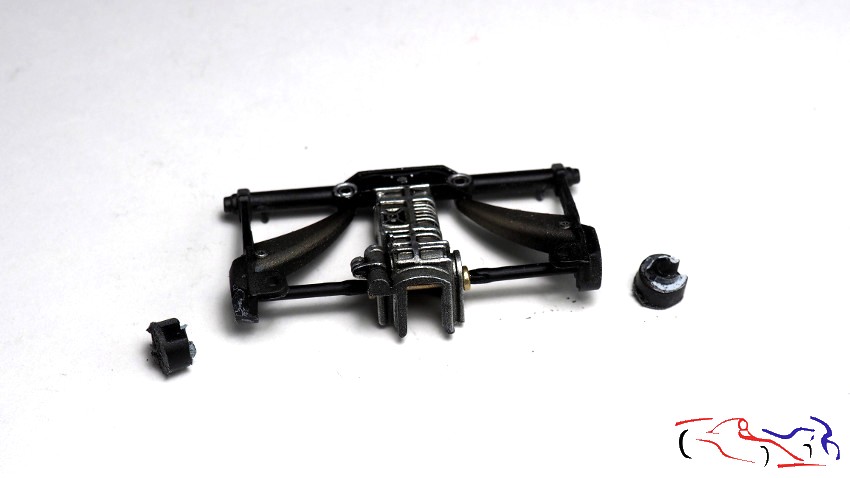
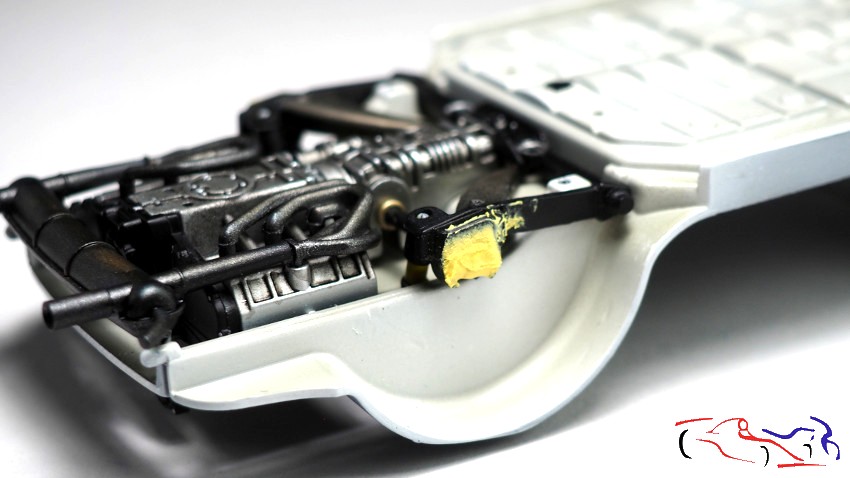
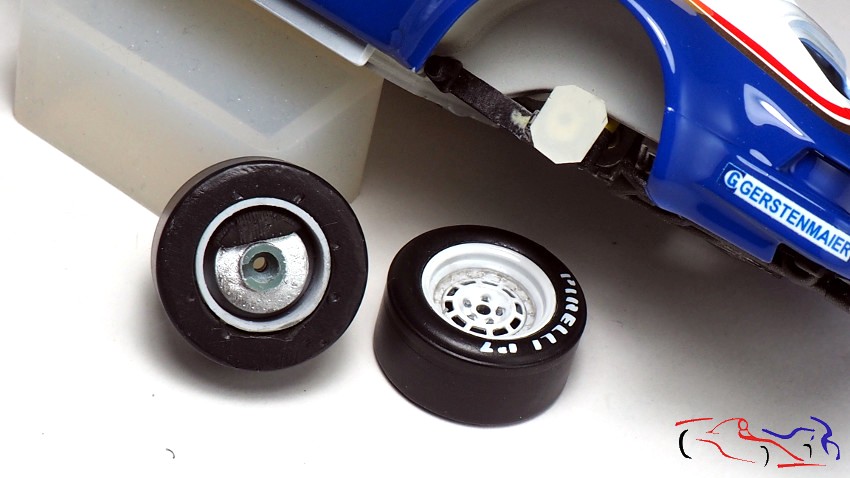
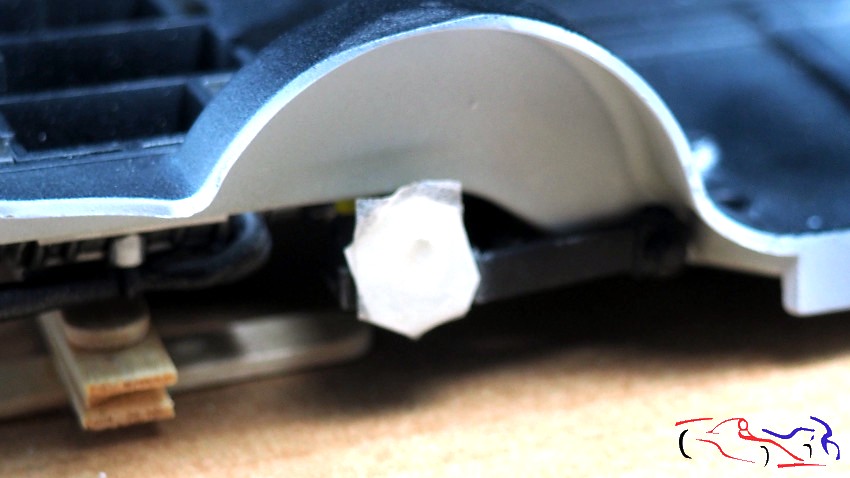
En las siguientes fotos, os muestro el util que hice para fijar las alturas de las ruedas, y como quedarían en la carrocería, con su medida corregida:
In the following photos, I show you the tool I made to set the heights of the wheels, and how they would look on the body, with their corrected measurement:
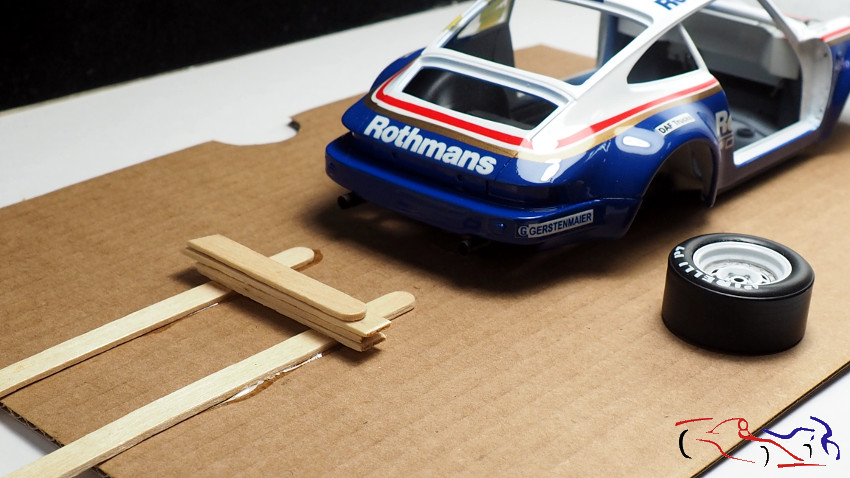
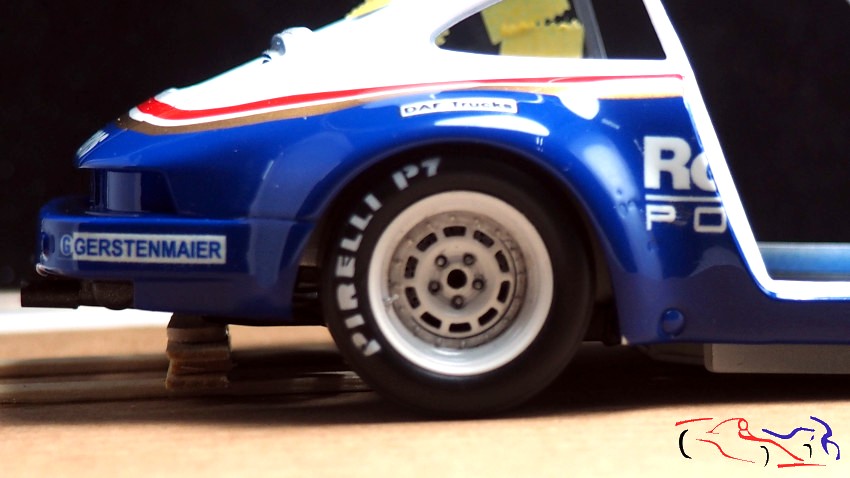
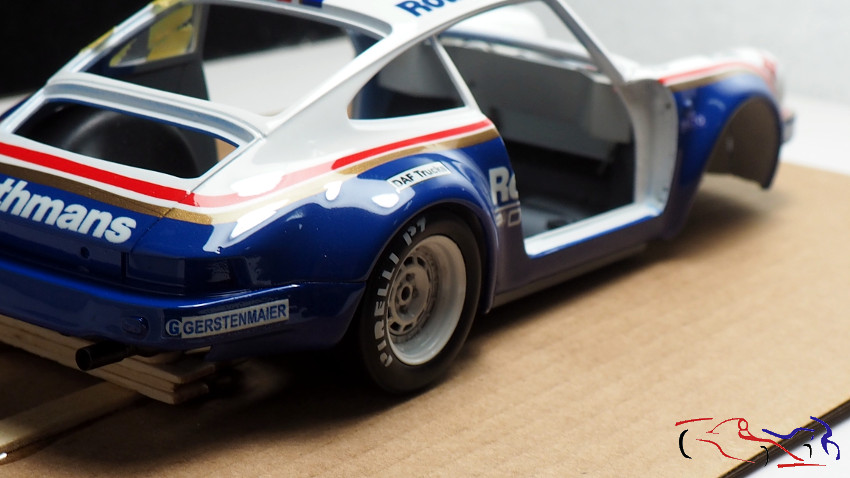
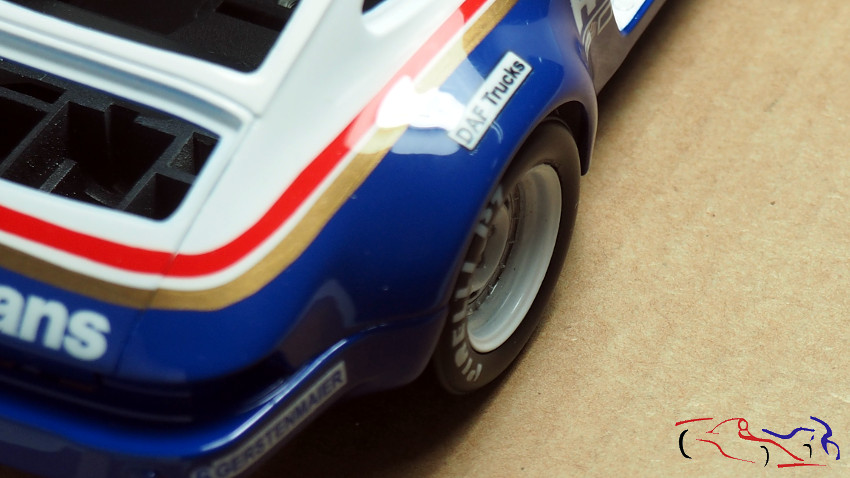
Para pegarlas, utilicé pegamento epoxy de dos componentes, Entonces, para alinear la ruedas correctamente, puse el chasis en mi útil cuando ya estaban las ruedas puestas y antes de que el pegamento secara. Lo hice en dos pasos, uno para cada eje.
To glue them, I used two-component epoxy glue. So, to align the wheels correctly, I put the chassis on my tool when the wheels were already on and before the glue dried. I did it in two steps, one for each axis.
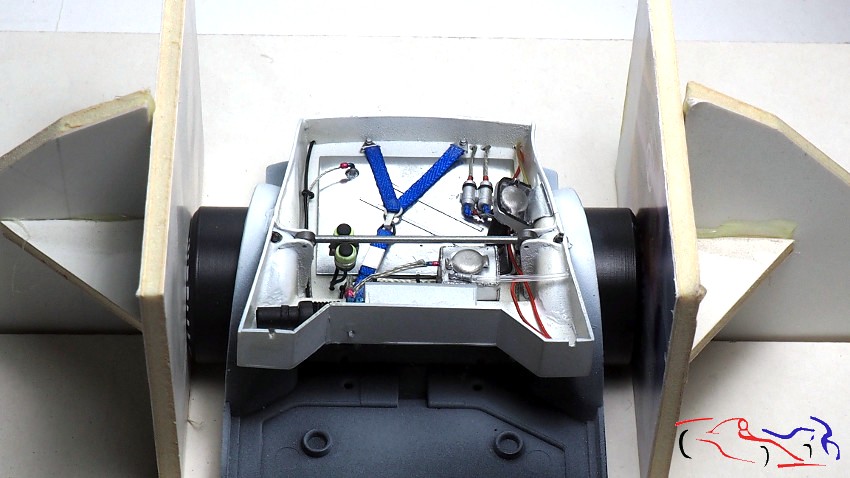
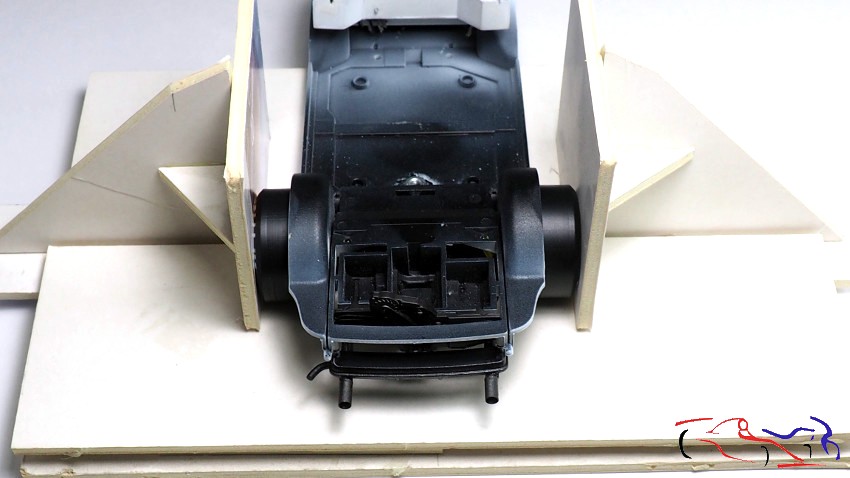
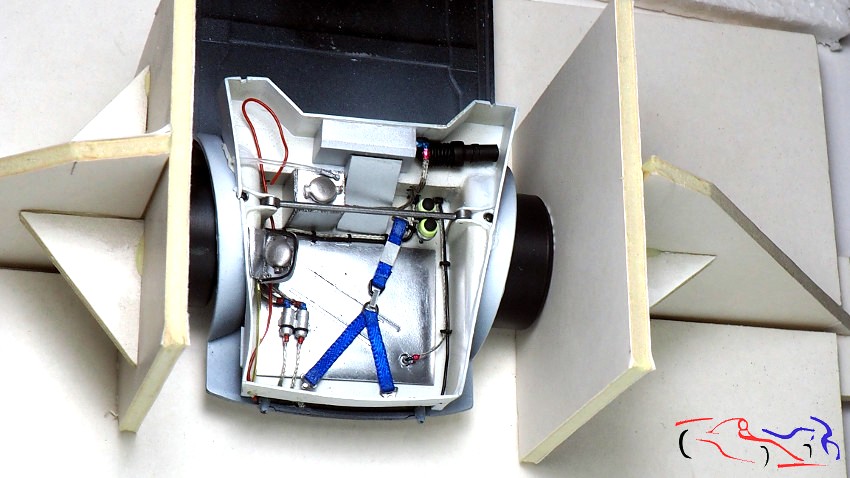
Y este es el resultado de las ruedas fijadas en el chasis:
And this is the result of the wheels fixed to the chassis:
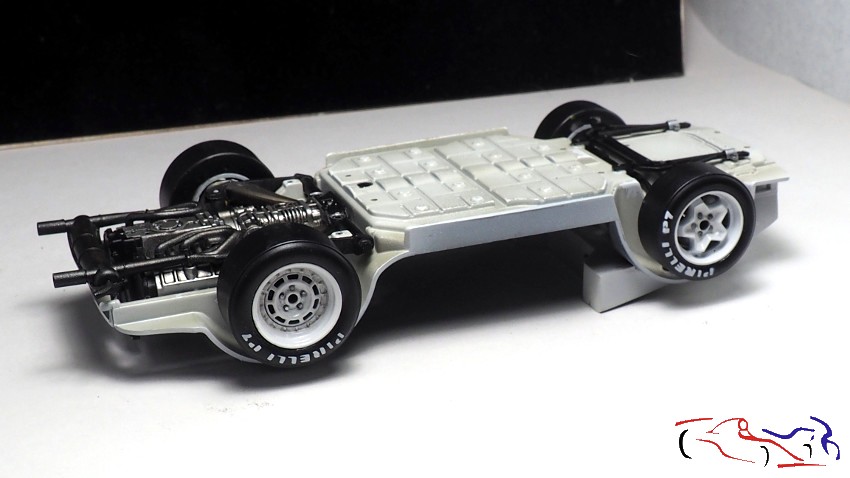
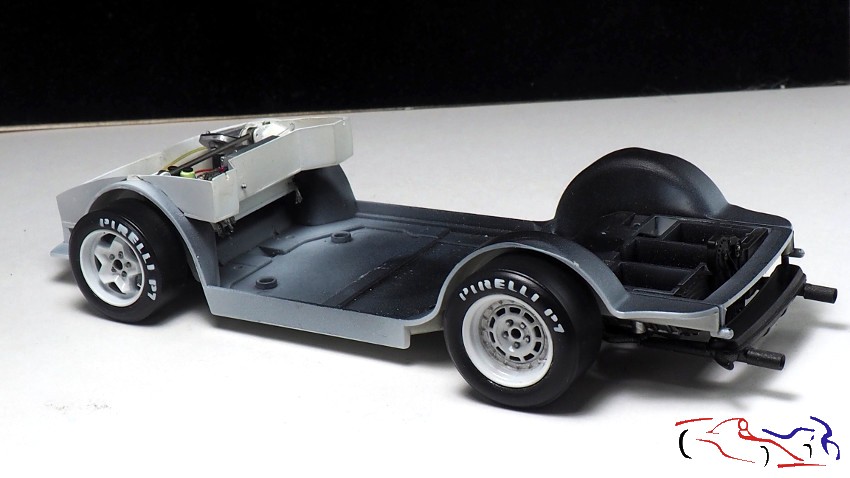
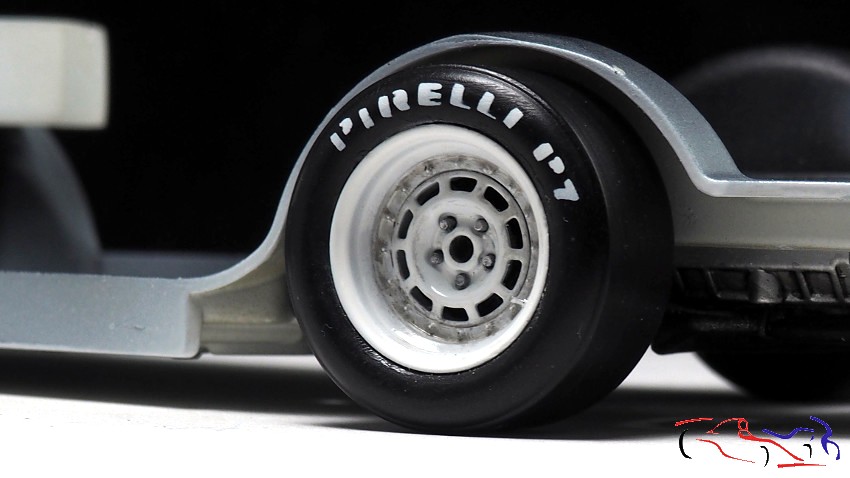
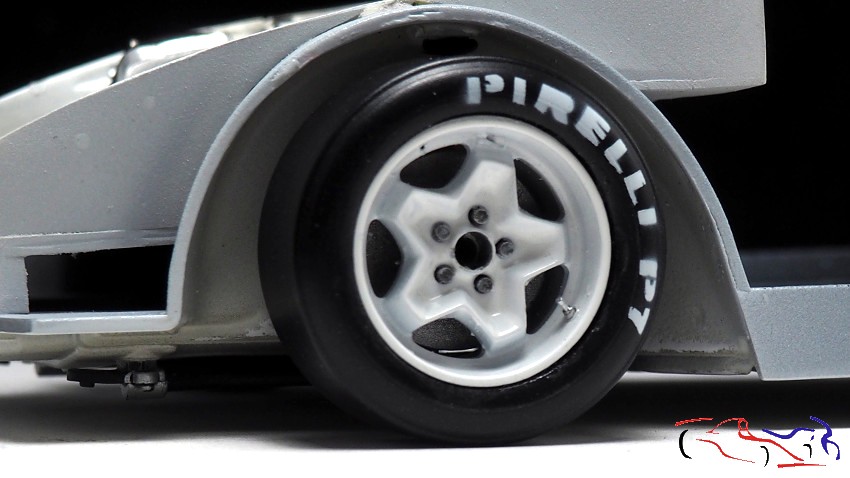
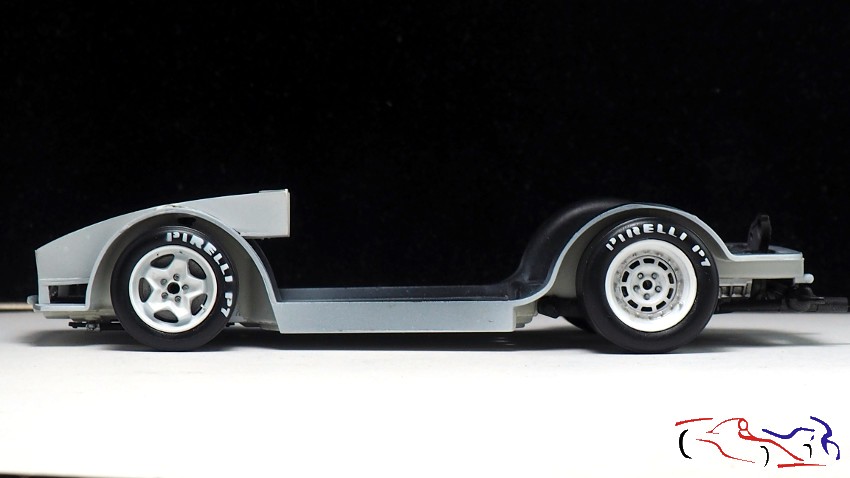
Y aquí, con al carroceía puesta!!
And here, with the body on!!
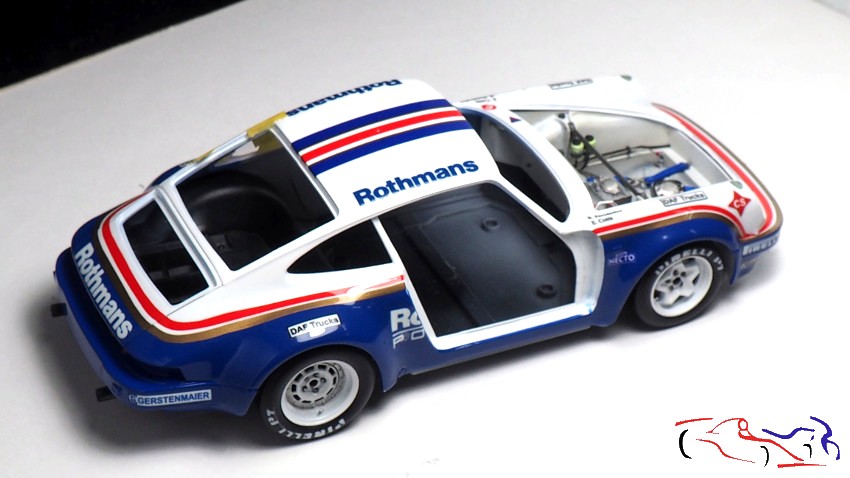
Lo siguiente fue pintar los marcos de los cristales con negro semimate LP de Tamiya, haciendo yo mismo las máscaras de las ventanas, Aproveché a pintar el interior de las puertas y algunas piezas de los coches a 1/43:
The next thing was to paint the glass frames with Tamiya LP semi-matte black, making the window masks myself. I took the opportunity to paint the inside of the doors and some parts of the 1/43 cars:
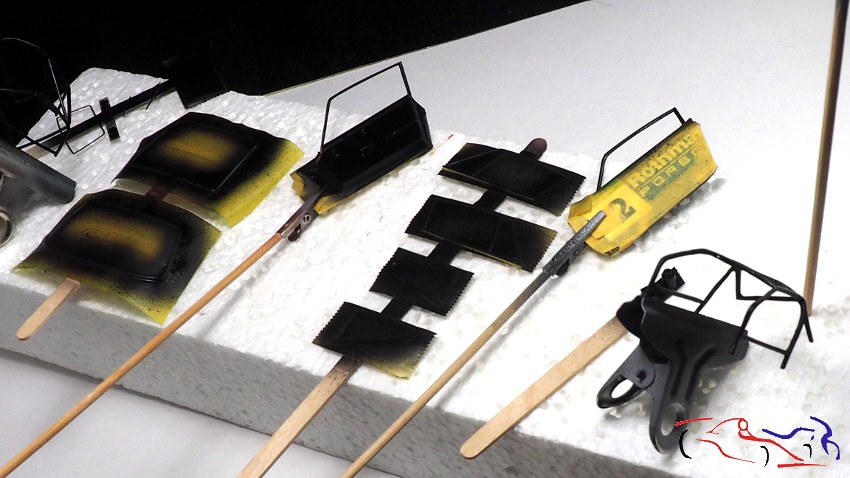
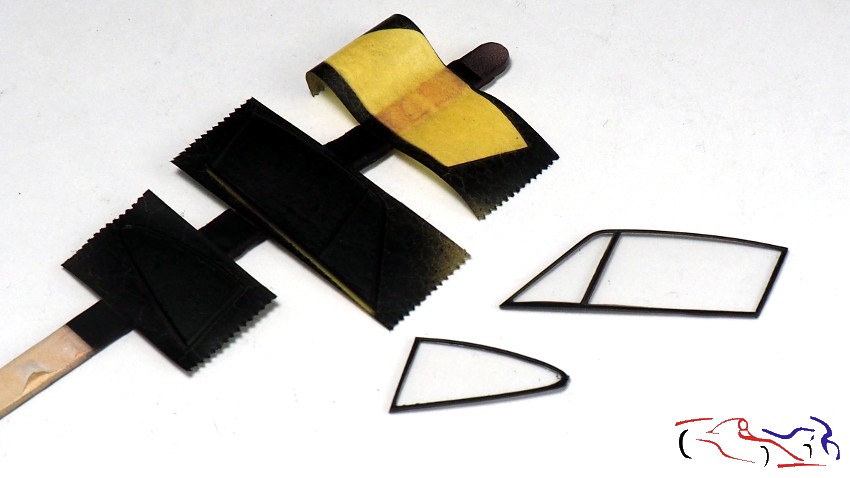
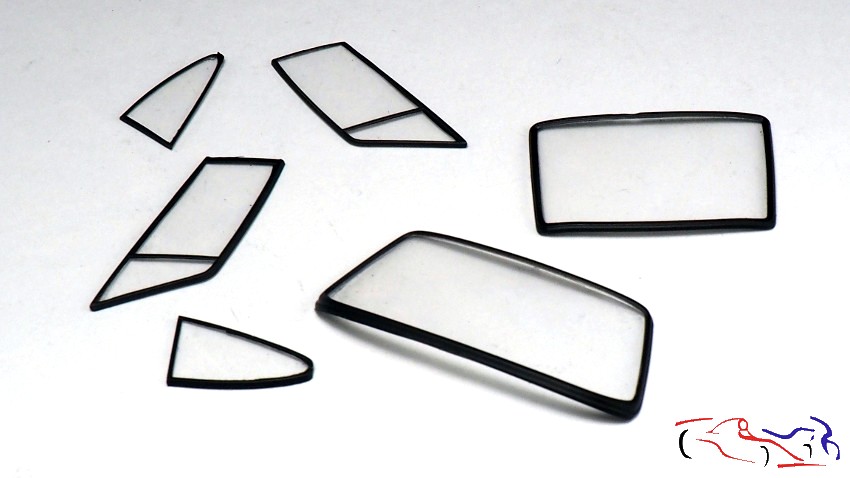
Aquí os muestros las pertas en negro satinado LP de Tamiya, y los marcos e interior de la carrocería, que fueron pintado con negro amte acrílica de Tamiya, para poder eliminar con facilidad los posibles errores de las máscaras:
Here we show you the doors in Tamiya LP satin black, and the frames and interior of the body, which were painted with Tamiya acrylic amte black, to easily eliminate possible errors in the masks:
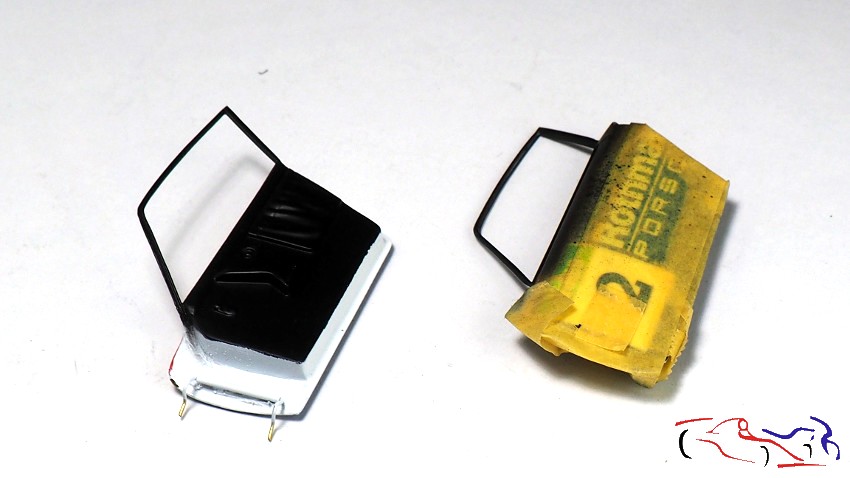
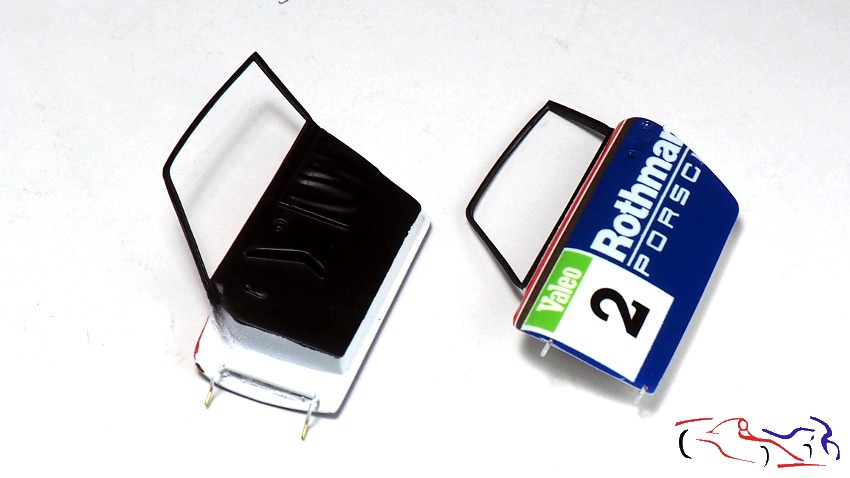
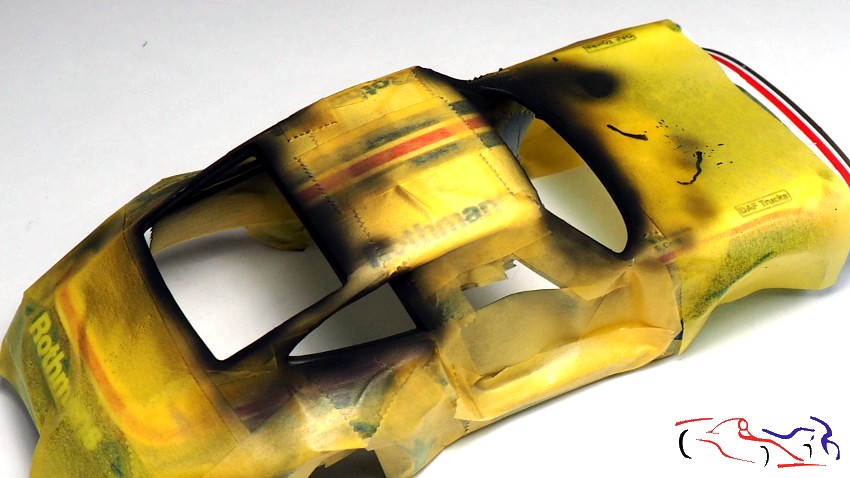
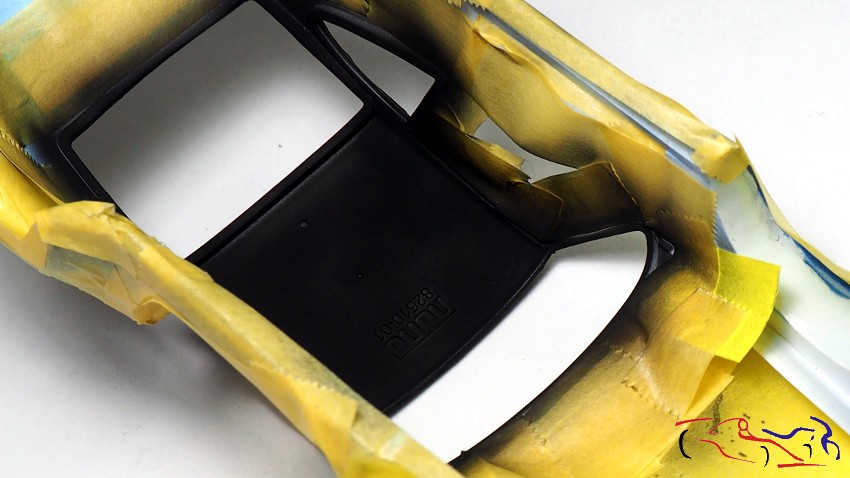
Y este es el resultado:
And this is the result:
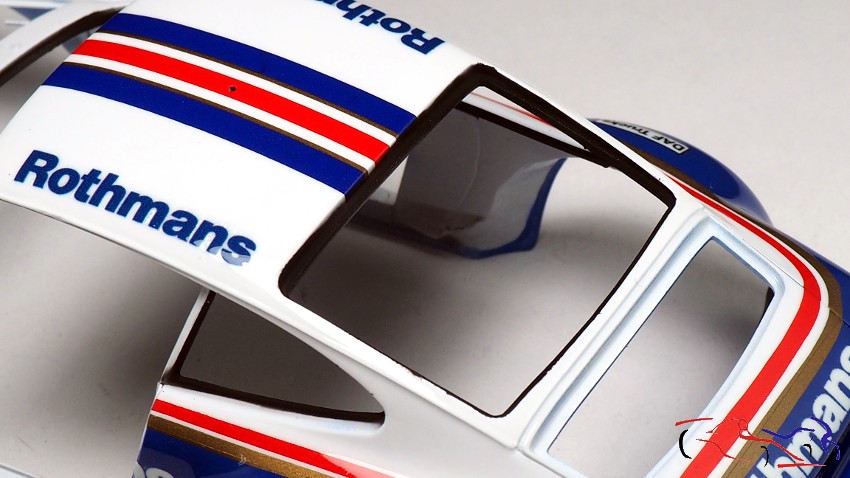
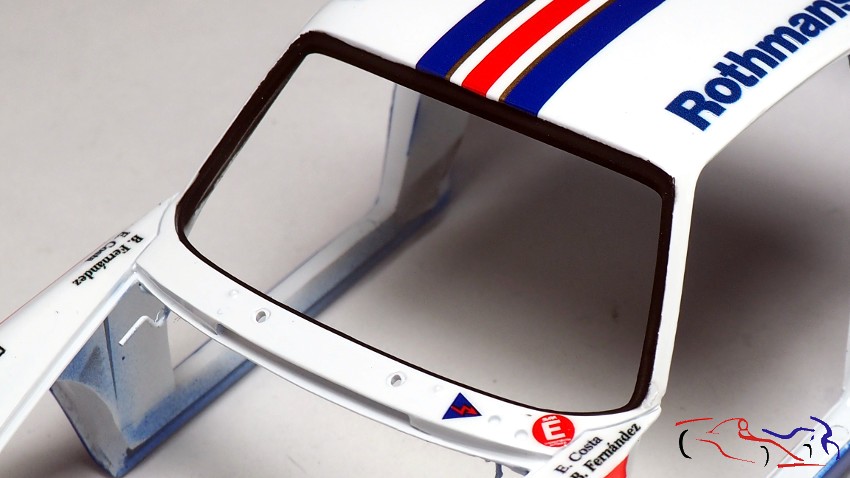
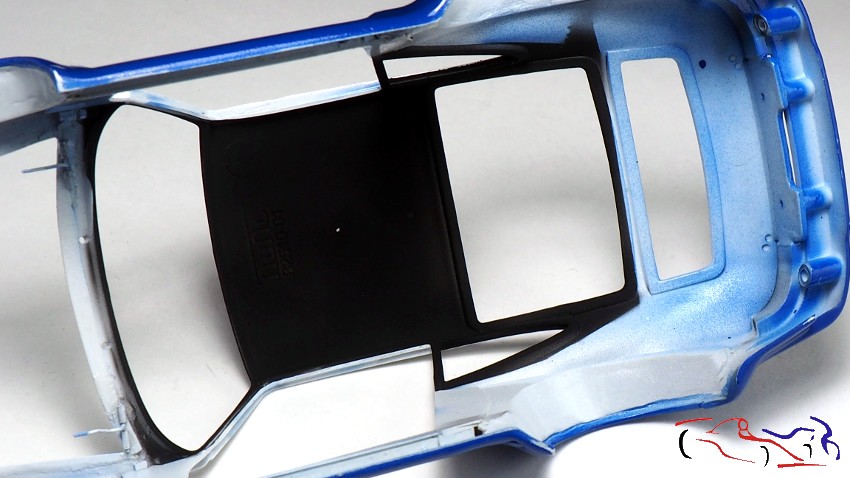
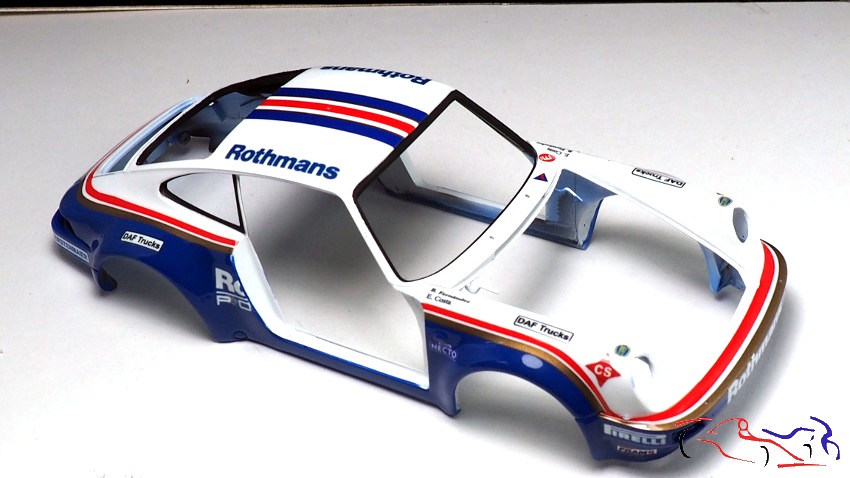
También, aproveché a pintar el interior del capó, que aun quedaba por pintar, de blanco LP de Tamiya:
Also, I took the opportunity to paint the inside of the hood, which still had to be painted, in Tamiya LP white:
Y empezamos a pegar más cosas: al cockpit al chasis, en el que vemos los cables de los interfonos, atados al arco con cinta de enmascarar negra de Hasegawa de 0,5 mm. También podéis ver que he añadido algún cable y un par de piezas dentro del capó delantero, para llenarlo un pcoo más.
And we began to glue more things: to the cockpit to the chassis, where we see the intercom cables, tied to the arch with 0.5 mm black Hasegawa masking tape. You can also see that I have added some cables and a couple of pieces inside the front hood, to fill it a little more.
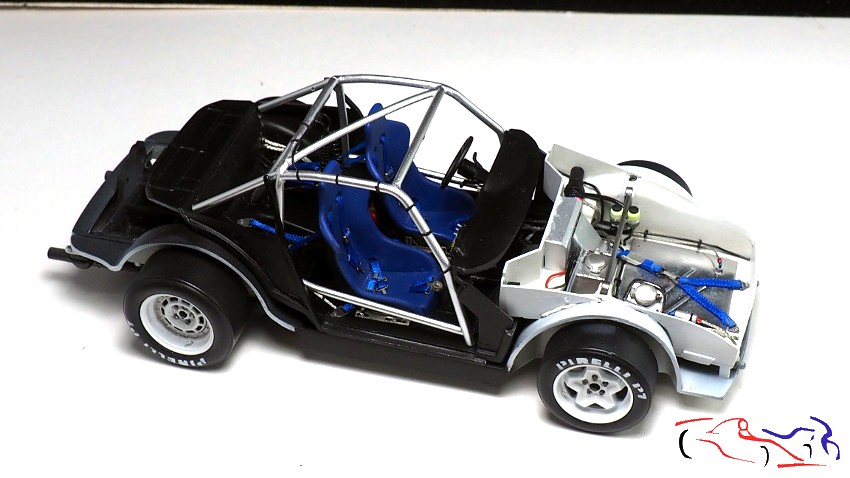
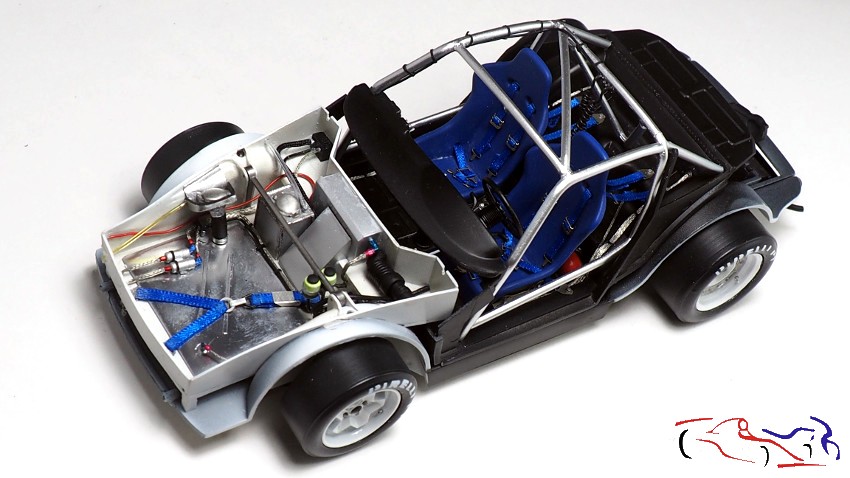
Más fotos del cockpit:
More photos of the cockpit:
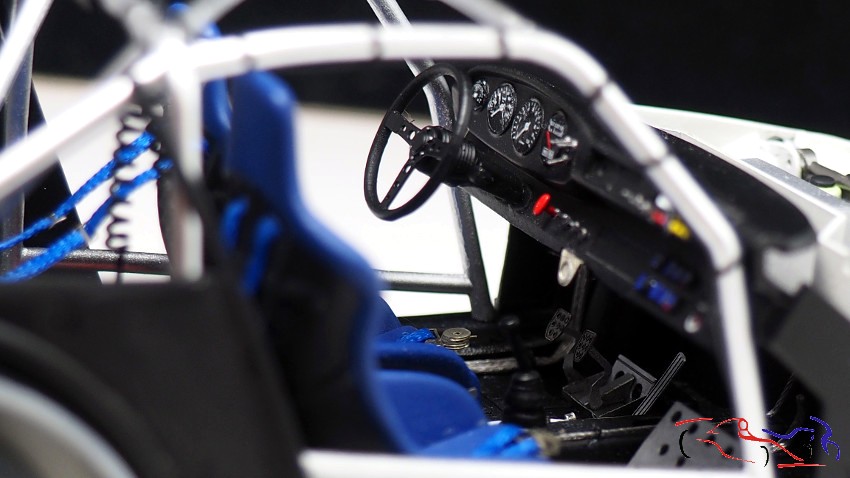
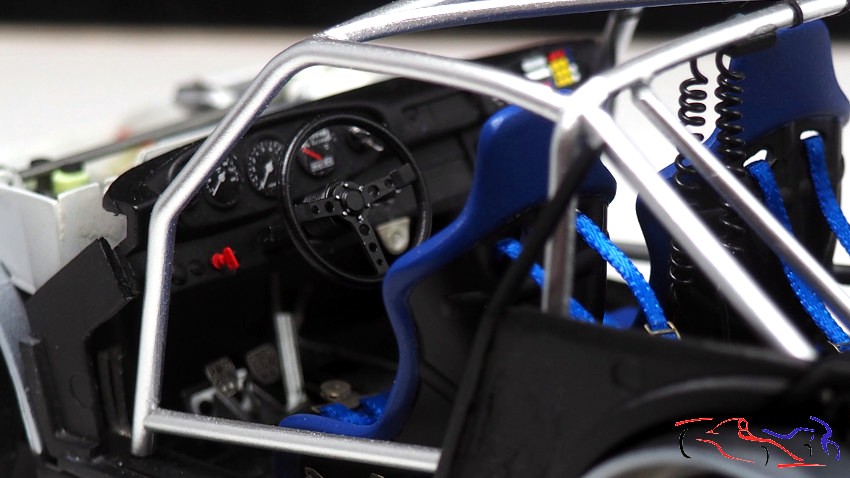
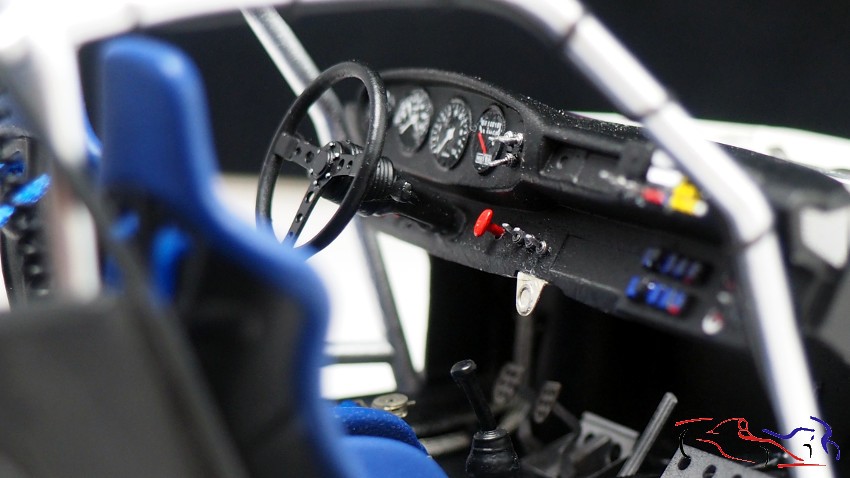
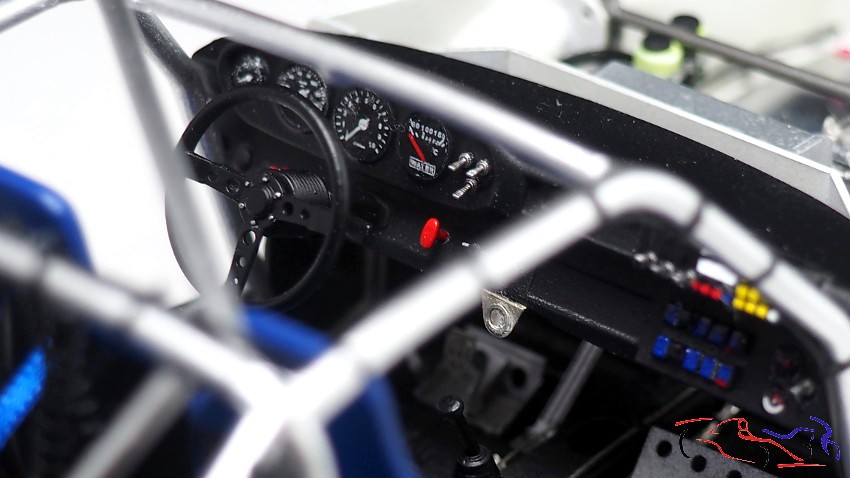
Y más del interior del capó delantero:
And more from inside the front hood:
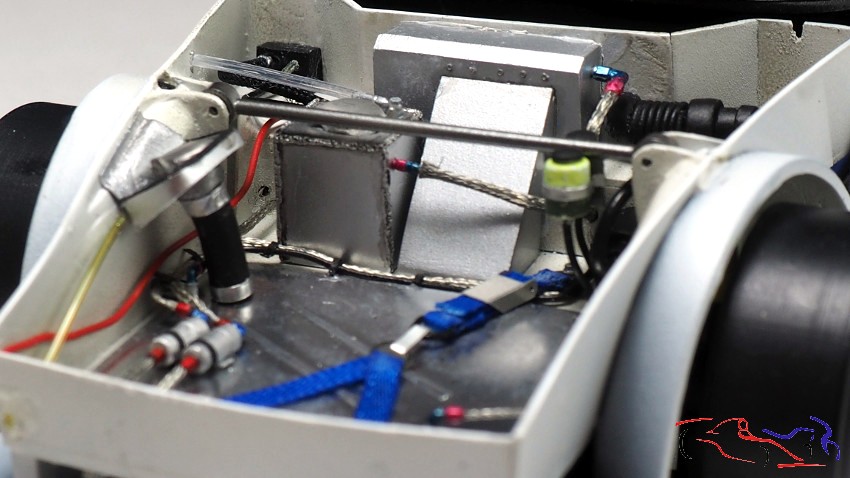
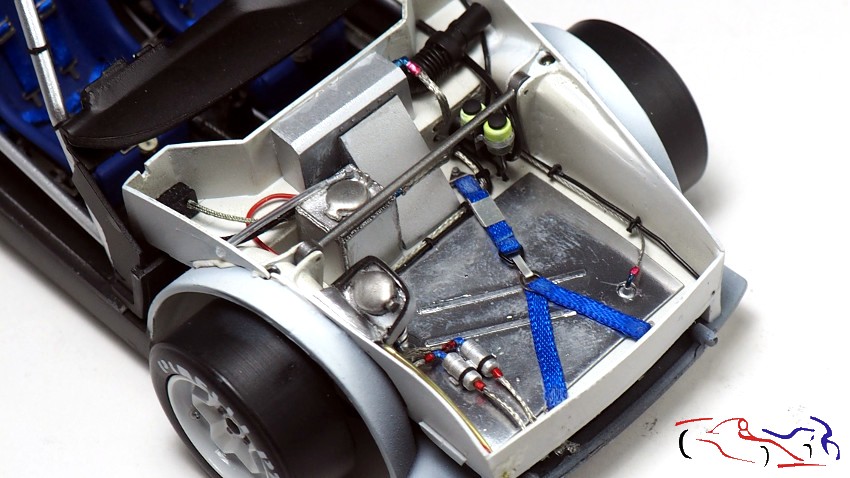
Ya llegamos casi al final, siendo lo próximo, todo lo que se refiere a la carrocería: luces, puertas, cristales, cierres, etc…. Gracias por ver y comentar!!
We are almost at the end, with the next thing being everything that refers to the bodywork: lights, doors, glass, closures, etc… Thank you for watching and commenting!!

